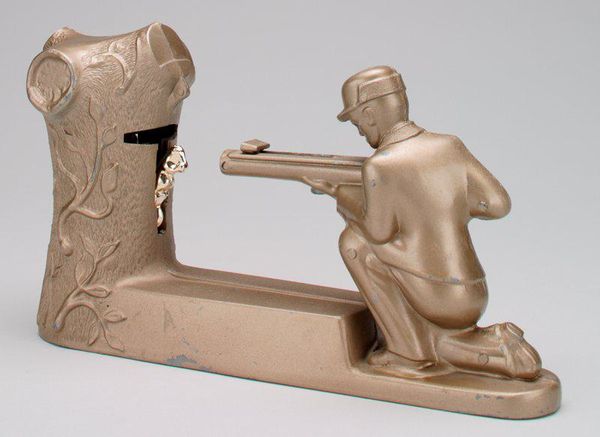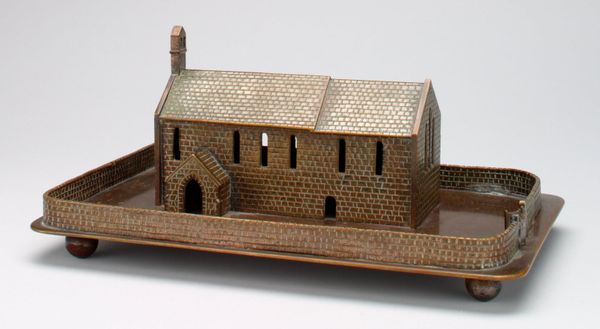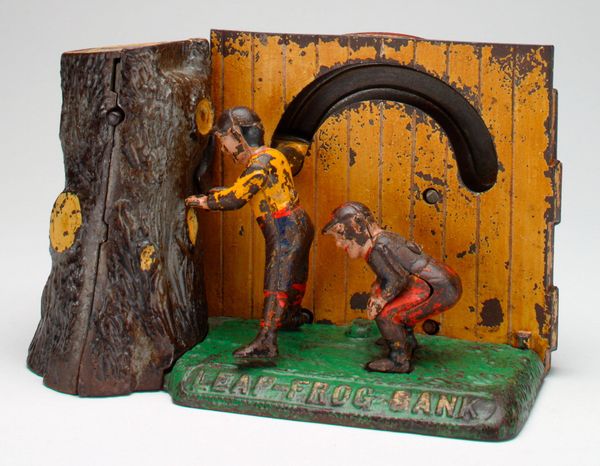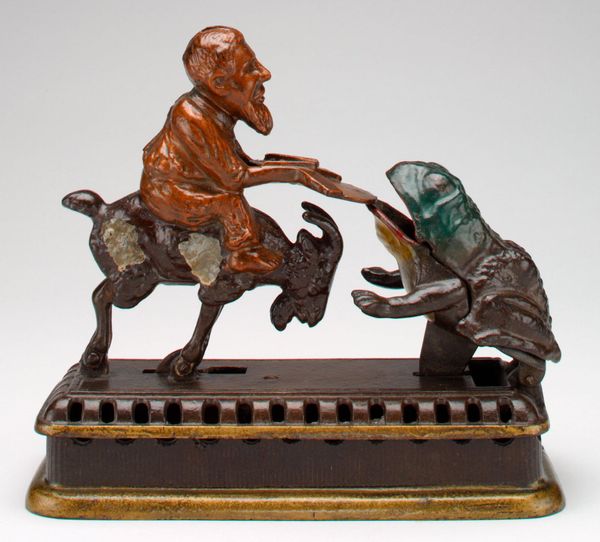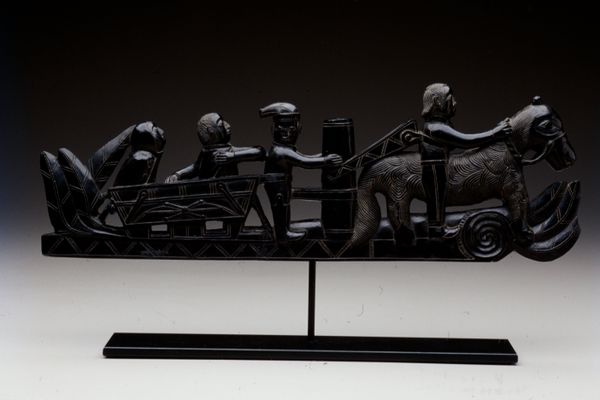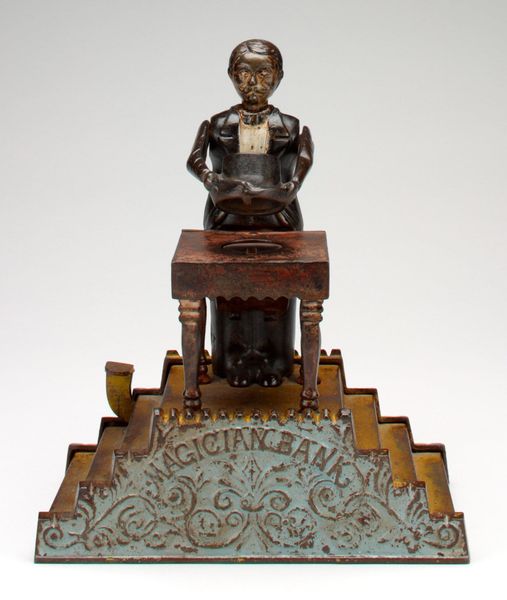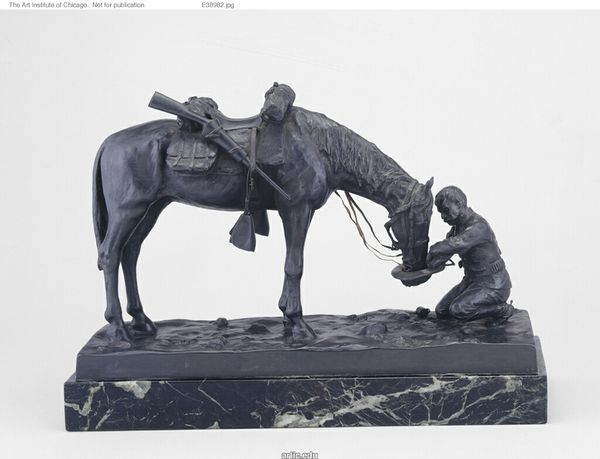
assemblage, metal, sculpture
#
assemblage
#
metal
#
sculpture
#
figuration
#
sculpture
#
decorative-art
Dimensions: 4 3/8 x 10 1/4 x 3 3/8 in. (11.11 x 26.04 x 8.57 cm)
Copyright: Public Domain
Editor: Here we have "-Football Bank-" a mechanical bank created around 1895 by John Harper & Company. It's a sculpture of painted metal. The subject is a young boy seemingly kicking a coin into what I suppose is meant to be some sort of sporting structure. It's quaint, almost… disturbingly quaint. What’s your take on this piece? Curator: This bank, while seemingly innocent, exists within a complex historical and social context. Mechanical banks like these became popular during a period of immense racial discrimination and segregation in the United States. The depiction of the Black boy is a caricature that perpetuates harmful stereotypes of that era, evoking a sense of dehumanization for financial gain. Do you notice the boy's posture, or the exaggerated features? Editor: Now that you point it out, yes. The way he’s positioned does seem to emphasize those features… So this isn't just about saving money; it's also about reinforcing power dynamics? Curator: Precisely. This bank encourages people to internalize and perpetuate the dehumanization of Black individuals by making a game of it. This aligns with a broader system of oppression, linking seemingly benign objects to painful systemic problems. How does recognizing that context change how you see it? Editor: It makes me profoundly uncomfortable. I went from thinking it was just an oddity to seeing it as a tool, perhaps unconscious, of propagating racism. Curator: Exactly. These kinds of objects serve as painful reminders of historical injustice. Analyzing art through this intersectional lens enables us to unpack harmful power dynamics. We must understand how art can normalize these dynamics if we want to create more equitable conditions moving forward. Editor: I guess art isn't created in a vacuum, and acknowledging this bank's historical baggage helps contextualize that, and its place within American culture. Curator: Indeed. The bank serves as a powerful starting point for larger conversations. It is a reminder of past injustice while offering tools for interrogating inequities in our own moment.
Comments
No comments
Be the first to comment and join the conversation on the ultimate creative platform.


